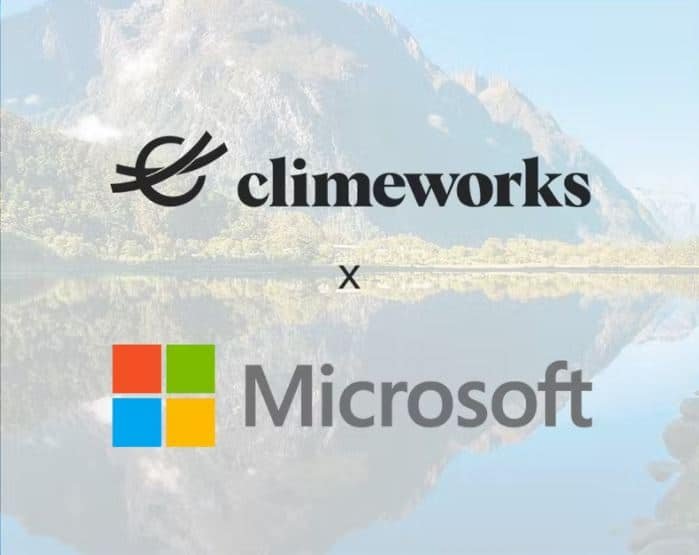Microsoft signed a 10-year carbon removal deal with Climeworks to suck in 10,000 metric tons of CO2 from the air using direct air capture.
The deal is the most significant long-term agreement Microsoft has made with a carbon dioxide removal (CDR) supplier. It’s also one of the biggest direct air capture (DAC) deals to date via Climeworks’ DAC plant in Iceland.
Climeworks calls its DAC plant Orca. It has the capacity to remove 4,000 Mt of CO2/year. It sucks in CO2 from the air and turns it into stone underground.
Fans draw huge amounts of air into the DAC system. Chemicals react with the CO2 which leaves nitrogen, oxygen, and other gases to return back to the atmosphere.
The chemical filters are then heated using renewable energy to release the CO2. This is then dissolved in water, and injected into basaltic rock 1,000m underground. Over 2 years, the dissolved CO2 crystallizes into a mineral holding it for good.
The DAC system can also upcycle the captured CO2 into new materials like low carbon fuels or chemicals.
Microsoft – Climeworks Carbon Removal Agreement
The DAC deal is part of Microsoft’s climate goal to be carbon negative by 2030 and reach net zero emissions by 2050. The tech giant revealed these targets in 2020. One year later, Climeworks’ carbon removal was the only DAC solution chosen by Microsoft for its first CDR portfolio.
To date, Microsoft has a total of 21 carbon removal projects around the world. It has another 106 proposed projects in the pipeline.
The tech giant said that it pledged to remove 2.5 million Mt of carbon from the beginning of 2021 through the contract. But the financial details of its CDR purchase agreement with Climeworks weren’t revealed.
Last March, Microsoft announced that it had allocated $471 million toward its $1 billion Climate Innovation Fund. The fund is for ramping up the development of carbon reduction and removal technologies. It has bought 1,400 Mt of CO2 removal from Climeworks last January 2021.
As for the DAC pioneer, Climeworks noted that the investment from Microsoft will help scale up its carbon removal technology. The firm’s co-CEO and co-founder said that:
“Long-term commitments like this multi-year agreement are crucial for scaling the DAC industry because the guaranteed demand catalyzes financing of our infrastructure… and consequently accelerates the development of the required ecosystem for scaling DAC.”
The DAC company has set the ambitious goal of multi-megaton carbon removal capacity by 2030 and gigaton by 2050. It’s building a much bigger plant called Mammoth that will be done by 2024. It can remove 36,000 Mt of CO2/year, which is 9x more than Orca can.
The Critical Need for Carbon Removal
Tech companies have been investing in CDR projects that drives growth in the industry. The Microsoft – Climeworks carbon removal agreement comes only a few months after the tech firm joined Alphabet and Salesforce in a similar deal. The three giant firms committed $500 million to scaling CDR by 2030.
In August 2021, Climeworks and Swiss Re also inked a 10-year carbon removal agreement worth $10 million.
Earlier this year, Alphabet also joined McKinsey, Meta, Shopify, and Stripe in investing $925 million to carbon removal initiatives. This commitment called Frontier will advance CDR technologies to help fight climate crisis.
The Intergovernmental Panel on Climate Change estimates an average of 6 billion metric tons of CO2 needs to be removed each year to achieve climate goals by 2050.
Meanwhile, the International Energy Agency says there are 19 DAC plants operating worldwide right now.
CDR technologies have been criticized as a distraction from emissions reduction efforts and are too small to push the needle. Yet, efforts to reduce emissions are happening too slow according to analysts.
And so the UN’s climate panel believes that removing CO2 is now critical, along with drastic reduction efforts.
Ultimately, the world has to remove billions of tons of carbon each year to bring global warming to safe levels. How many billions will depend on how and where individuals and firms invest their money.


